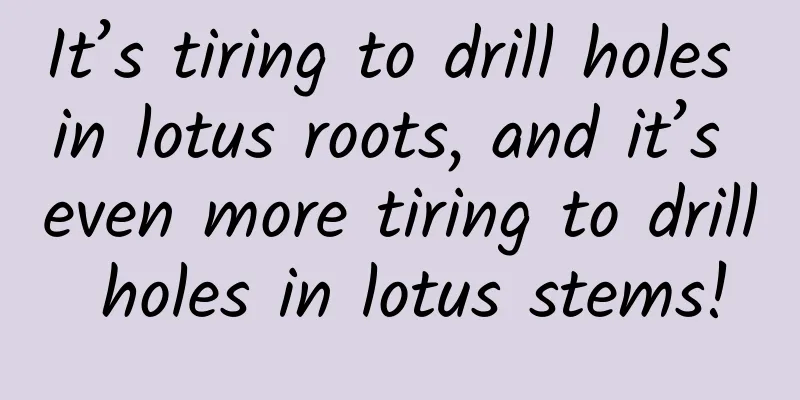The Webb telescope, which is so powerful, actually has this "dark history"

|
The astronomical community has had a great event in the past two days - the first batch of photos taken by the Webb telescope have finally been released online! These photos are everywhere, so I won't go into details here. Today, we will focus on the dark history of this super telescope. Yes, it is not only a pigeon king, a money-eating beast, but also a classic (not so positive) teaching material that can scare project managers to death... Imagine that you have a friend who invites you to go out and watch the stars, but today he says the telescope is not ready, tomorrow he says he has something to do at home, and the day after tomorrow he says he has no money to buy gas... We would have long since broken our friendship with such a person who always stands up others. But there is such a legend in the astronomy world, who has been breaking his promises for more than 14 years, but he still makes people love and hate him and full of expectations... It is the legendary James Webb Space Telescope (JWST). When the space telescope was launched in 1996, the goal was to launch it into space in 2007. However, it has experienced a series of delays, additional funding, and even near-abortion, which dragged on for 14 years. It seems to be really going to launch on December 22, 2021 (it’s strange, it has been delayed until December 25)! Just search for the Webb telescope and you will find that all the news about it is that it has been postponed again... What is the great mission of the Webb telescope? And why does it keep failing? 01 Want to take a baby photo of the universe? Send Webb to space first The Webb Telescope is named after James Webb, the second NASA administrator who led the Apollo moon landing program, but its original name was the "Next Generation Space Telescope". The "next generation" here is relative to the Hubble Space Telescope - its official position is the successor to Hubble. In the past, it has always been called the Webb Telescope, and later the standard translation became "Webb". The main task of the Webb telescope is to see deeper and farther into the universe than Hubble, and trace back to the infant appearance of the universe 13.2 billion years ago when the first stars and galaxies were just formed. Its observation results will provide important data for the early evolution of the universe. Schematic diagram of the imaging principle of the Webb telescope from NASA So why is it so important to look deeper and further? Because it takes time for light to propagate. For example, what you see now is actually the screen of your mobile phone from 1 nanosecond ago. When you look up at the bright moon, you see the moon from 1 second ago. The sunlight shining in the spring sky in Chang'an was from the surface of the sun 500 seconds ago. If you set up an astronomical telescope, you will see Sirius from 102 months ago, the Orion Nebula from 1,340 years ago, and the Andromeda Galaxy from 2.5 million years ago... In short, the farther you look, the older the scene you see. Therefore, the principle of the Webb telescope taking pictures of the small universe is very "simple": just look far away. However, the universe is constantly expanding. The starlight of the first generation of stars was ultraviolet and visible light when it started out, but when it reached the earth billions of years later, it had been "stretched" into orange-red light and infrared light by the expansion of the universe. When studying new stars that are forming nearby, the infrared light with longer wavelengths and stronger diffraction ability that can come out of the nebula dust to report is also infrared light with a stronger diffraction ability. Therefore, Webb works in the 0.6-28 micron band, which is just suitable for observing these infrared rays. It doesn’t matter if you don’t understand the above paragraph. Just take a look at the comparison picture and it will become clear. The picture on the right uses infrared band for observation, which weakens interference, and you can obviously see more and clearer stars than the picture on the left. Comparison of observations in the visible light and infrared bands. Infrared rays can "transmit" through the nebula. Some people may ask, why not just build a telescope on Earth? Why go to so much trouble to send it to space? There are two reasons: absorption and interference. On the one hand, the Earth's atmosphere absorbs infrared rays, so certain bands of infrared rays cannot enter at all. Infrared rays coming from the end of time and space are already dying, and after being filtered by the atmosphere, they are even less powerful. On the other hand, infrared radiation is everywhere, and the warm Earth's atmosphere is itself a huge source of infrared interference, which will make it difficult for telescopes to observe well in the infrared band. Therefore, it is impossible to study infrared rays from the deepest part of the universe on the ground. Even the most powerful ground-based telescopes, such as China's "Sky Eye" FAST, the Very Large Array VLA, and the European Extremely Large Telescope E-ELT under construction, are not suitable for this kind of research. The transmittance of the Earth's atmosphere at each wavelength. The trough is where the light is absorbed. What to do? Break out of the atmosphere and go into space, the farther away from these obstacles the better! So, taking the Hubble telescope, which we are familiar with, as an example, is it far enough? Not only is it not far enough, but it is also not suitable. Hubble orbits the Earth at an altitude of 540 kilometers, where there is still a thin atmosphere and cannot escape infrared baking - when flying to the daytime zone, if you turn your head away from the sun, you can't avoid the bright face of the Earth - the illuminated telescope itself will also create infrared radiation interference. Fortunately, Hubble doesn't have to worry too much because it mainly works in the ultraviolet and visible light bands. Webb, which focuses on infrared observation, cannot work in such an environment, so its final location is the Sun-Earth Lagrange point L2, which is outside the Earth's orbit and 1.5 million kilometers away from the Earth (4 times the distance between the Earth and the Moon). Here, the Webb telescope can orbit the Sun at the same period as the Earth. Schematic diagram of the Webb telescope's orbit from NASA There is no atmosphere here, and interference sources such as the sun, the earth, and the moon are all in the same direction. As long as this direction is blocked, you can listen to the first baby cry coming from the depths of the universe without distraction. The rendering of the Webb telescope floating in L2. The sun, the earth, and the moon are always blocked in the same direction. 02 Want to do your job well? Full of black technology However, even if the Webb telescope is sent into space, it will be useless if the telescope itself is not powerful enough. The Webb telescope is full of goodies, so what are they? Continuing with the light blocking issue mentioned above, the Webb telescope is not fixed on L2, but is floating in circles around L2 (as shown in the figure below). Schematic diagram of the Webb telescope's orbit from NASA In order to block the sunlight from all possible angles, the Webb telescope is equipped with a giant sunshade. It is roughly in the shape of a large diamond kite, with a long diameter of 21 meters and a short diameter of 14 meters, and an area comparable to a tennis court. The sunshade has five layers of aluminum-coated (the first two layers are doped with silicon) polyimide film, each layer of which is as thin as transparent office tape and separated from each other. The same-size test piece of the sunshade comes from NASA This is because heat can only be transferred through radiation between the multi-layer films, and eventually decays exponentially. Test data shows that when the sun side of the sunshade receives 300 kilowatts of radiation power, the sun side only outputs 23 milliwatts. This performance is enough to ensure that the telescope on the sun side is stable at below -233 degrees Celsius when the temperature of the light-receiving surface is as high as 85 degrees Celsius, so as to "observe in secret" and spy on the secrets of the birth of the universe. True secret observation, left picture from NASA The observation point was chosen and the sunlight was blocked. The signal interference problem was solved, but there was still a big problem to be solved. The longer the wavelength of observation, the larger the mirror is needed, which is the case with giant objects on Earth that are hundreds of meters in diameter. In order to better observe infrared rays, the Webb telescope needs a larger mirror than the Hubble. Comparison of the main mirror sizes of the Webb Telescope and the Hubble Telescope from NASA Hubble's primary mirror has a diameter of 2.4 meters, taller than Yao Ming, while Webb's primary mirror has a diameter of 6.5 meters, about two stories high. The performance of this giant mirror is quite outstanding: in the 2-micron infrared band, Webb's resolution can reach 0.1 arc seconds, which is equivalent to being able to see a ping-pong ball 80 kilometers away. This allows Webb to see celestial bodies that are dozens of times darker than Hubble's observation limit and 10 billion times the observation limit of human eyes. A human being takes a photo with Webb and Hubble (Webb is the first from the left) from NASA Interestingly, Webb's large mirror is 6.25 times larger than Hubble's, but it is actually lighter than Hubble's (625 kg vs. 1,000 kg). Here again, there is high technology: Hubble's mirror plate is made of glass with a density of 2.5 grams per cubic centimeter, while Webb's mirror plate is thinner and lighter, made of metal beryllium with a density of only 1.85 grams per cubic centimeter, so the mass per unit area of the mirror plate is only 10% of Hubble's. In addition to being light and hard, beryllium is more importantly more stable in shape than glass in the extremely cold environment where the telescope is located. The only drawback is that it is grayish in color and has poor reflectivity, so people plated a layer of 0.1 micron thick gold on the beryllium mirror - perfect. Gold-plated mirror, seeing is believing from NASA Finally, how do we get a two-story-high primary mirror, plus a tennis court-sized sunshade, into space? Obviously, it can only be folded layer by layer and stuffed into the rocket, and then unfolded in space. Therefore, Webb's primary mirror is not a single beryllium plate, but is made up of 18 regular hexagonal small mirrors. In order to make the unfolded primary mirror focus accurately, the fine-tuning system of each small mirror requires a stepping accuracy of 5 nanometers. Unfolding the sunshade is a more complicated task, requiring about 7,000 parts to work together to unfold, flatten, tighten and isolate the five layers of film. This is what Webb looks like when folded up. From NASA 03 I stand you up because I'm high (tech) and expensive (costly) After talking about the main tasks and general design of the Webb telescope, we can explain why this powerful and complex telescope has become the "king of pigeons". Nothing else, just "the idea is fun for a while, but the execution is a crematorium" plus "don't underestimate the low initial budget, you will be cheated without negotiation." First of all, the idea is too advanced and requires too high a level of technology. Back in 1996, when NASA set up the project, it was not even clear how to build such a telescope because many related scientific and technological fields, such as materials science, precision processing, automatic control, and cooling technology, were not yet fully in place. For example, the beryllium primary mirror mentioned above did not get the preliminary demonstration data until the end of 2001. Due to the numerous technical difficulties, it was not until 2007, the year when the Webb telescope was originally scheduled to be launched, that the 10 major technical points related to it were roughly eliminated. Moreover, in addition to building the telescope itself, packing such a big guy and accurately delivering it to the Lagrange point L2 is itself a daunting technical challenge. Webb packing diagram from NASA The consequence of spending a long time to overcome a large number of technical difficulties is a budget explosion. The key technology review of the telescope was completed in 2010, and the budget after the review had skyrocketed from the original $500 million to $6.5 billion. In July 2011, the U.S. Congress lost its patience and threatened to withdraw funding. Fortunately, in November, Congress calmed down and added some money, raising the budget to $8.8 billion - this money is almost enough to build two nuclear-powered aircraft carriers. After this storm, the project reached the final design and manufacturing stage. The next step is a long cycle of design, manufacturing, and testing. The reason why it is so long is that the telescope is deployed at a Lagrange point 1.5 million kilometers away. If something goes wrong, it is impossible to send someone to repair it. This is unlike the nearby Hubble Telescope, which can call a space shuttle to come and “fit glasses” if it is found to be out of focus after launch. Therefore, the Webb Telescope must be repeatedly debugged on the ground to ensure that it is foolproof. If all goes well, Webb will unfold like this from NASA But as the saying goes, the longer the night, the more trouble there is. With such a long delay, there have been many accidents. For example, the delay in 2018 was due to a tear in the sunshade during the trial display, which delayed it for two years. After that, there were all kinds of bad luck: the COVID-19 pandemic, the rocket was not ready... Even when the mirror was about to be put into the cabin, it was delayed for another four days because the fixing strap accidentally untied... In the end, the total cost of the project was close to $10 billion. Due to its out-of-control budget, many other scientific research projects could not raise funds and could not be carried out. The industry has a lot of resentment towards it. For example, Nature magazine once criticized the Webb telescope for "eating up astronomy." "The telescope that ate astronomy" Nature, October 2010 But no matter what, since astronomy has been eaten by Webb, it must be responsible! Let us wish the James Webb Space Telescope good luck! May this crystallization of human cutting-edge technology be successfully launched as scheduled, and may the mission work in the next ten years be smooth and fruitful! Come on Webb! Original image from NASA Extra: After spending 10 billion, can we find aliens this time? Perhaps the question that many friends are most interested in is whether such a wonderful space telescope can help humans find aliens? To find aliens, we can start by looking for habitable exoplanets, and finding such planets is the specialty of another space telescope, TESS, not Webb's main job. But Webb is really capable of doing this! For closer stars, Webb's super-resolution can directly see the large planets around them, or the hot embryos of planets that are being formed by accretion. If a planet has the opportunity to pass in front of its parent star, Webb can analyze the changes it causes to the star's spectrum, determine its atmospheric composition, and look for clues to life. The Webb telescope can also easily observe exoplanets and various small celestial bodies in the solar system, including satellites, comets, asteroids, dwarf planets, and the Kuiper belt, to further study the formation and evolution history of the solar system. We don't expect Webb to find planets around the first stars. They are too far away to see the small objects around them. In addition, according to the timeline of the "Big Bang" theory, there are not enough heavy elements around the first stars to form planets with solid ground. In short, we can only say that the Webb telescope has the ability to discover traces of life, but as to whether it can really discover traces of aliens, it probably depends on luck. Author | Qu Jiong, a popular science writer, has published works in the National Museum, the National Space Administration, etc. Review | Liu Xi, researcher at Beijing Planetarium, science film director and writer Editor | Ding Zong This article is produced by the "Science Rumor Refutation Platform" (ID: Science_Facts). Please indicate the source when reprinting. The pictures in this article are from the copyright gallery and are not authorized for reproduction. |
>>: A new virus? How did the name Omicron BA.5.2.1 come about?
Recommend
A 24-year-old boy fainted after having his teeth extracted and died after a craniotomy! Can wisdom teeth still be extracted?
Recently, #A 24-year-old boy fainted and died aft...
A steak for 9.9 dollars comes with a frying pan. Is it really edible?
Review expert: Wang Guoyi, Postdoctoral Fellow in...
Luo Yao's Graphic Design Thinking Course ended in March 2020 [HD video only]
Luo Yao's Graphic Design Thinking Course ende...
The 2023 Nobel Prize in Physics has been announced! Learn about the history of attosecond pulses
The 2023 Nobel Prize in Physics was awarded to th...
What issues should be paid attention to when editing Baidu Encyclopedia, so as to create Baidu Encyclopedia entries 100% successfully?
What issues should be paid attention to when edit...
Weighing more than two pigs! How was this champion giant pumpkin grown?
Your browser does not support the video tag Autho...
This kind of delicacy is recommended all over the Internet as soon as summer comes, but I advise you not to eat it!
Summer is here, and it is the perfect season to e...
This amazing fish: It took only 90 days to complete hundreds of millions of years of visual "evolution"
A group of newly hatched black sea bream fry are ...
How to quickly increase your store sales from 0 to 3,000
1. Background Store promotion will start on Novem...
What's the difference between Google and Tesla's self-driving technology?
Would you watch how a rice cooker cooks rice? You...
How to effectively promote the product in the early stage?
"Successfully executing a plan that makes no...
Why do I say that marketers are not good at branding?
The importance of a brand is generally only seen ...
How did Keep use the "mine-laying plan" to cold start after accumulating 6 million users in 6 months?
Many products are in the early stages of promotio...
Latest Age Regulations for Construction Workers 2022: What is the age limit for migrant workers on construction sites?
In rural areas, many farmers are forced to work i...
How did I manage to be featured on the App Store homepage in just one month?
Regarding the recommendation on the App Store hom...
![Top Community Operator Club: Practical Methods + Traffic + Projects + IP + Tools 9 Major Rights Empowerment [Video Tutorial]](/upload/images/67cc33987c165.webp)








